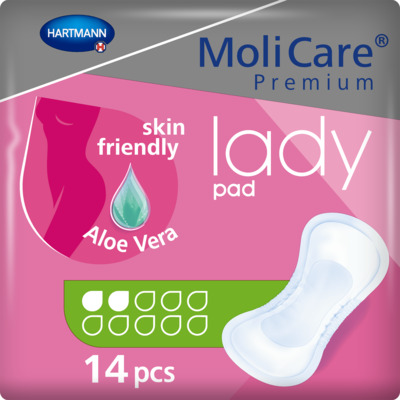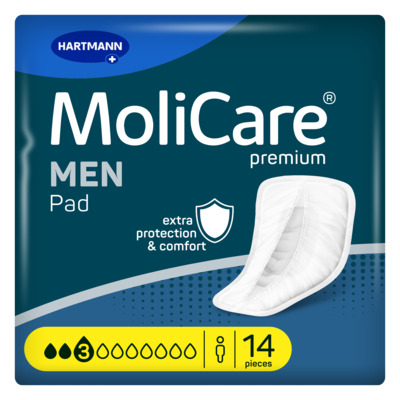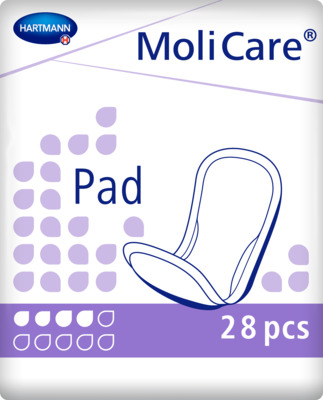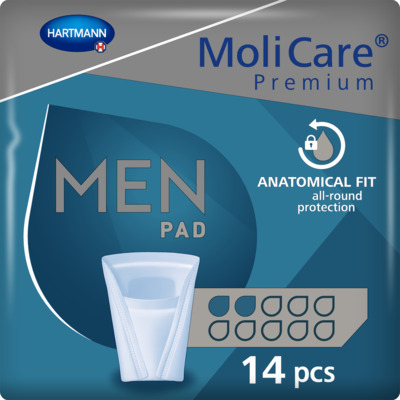Active living
What Causes Uric Acid Crystals?
Gout, a specific type of arthritis, primarily occurs when minuscule uric acid crystals accumulate inside and around the joints, typically starting in the big toe. This condition is triggered by an excessive buildup of uric acid in the blood, leading to crystal formation in the joints. Gout is known for causing episodes of pain, inflammation, and stiffness in the joints. Predominantly affecting men over the age of 30, it can also impact women post-menopause. In the UK, it's estimated that gout affects between one and two in every 100 people. This condition can be extremely painful and, in some instances, debilitating. This article will discuss any rising concerns that you may have about gout and prevention methods.

Understanding The Signs and Symptoms of Gout
While the formation of crystals can start anywhere in your body, including the kidneys, the condition typically affects the joints towards the extremities of the limbs. For example, the toes, ankles, knees, and fingers.
When you have gout, you may notice the following symptoms:
-
Joints that feel warm, hot, and/or very tender.
-
Moderate to severe pain in a single joint or multiple ones.
-
Red and gleaming skin over the troubled joint.
-
Swelling in and/or around the joint.
-
Difficulty moving the affected joint.
-
Depending on the joint affected, difficulty moving around in general and standing.
The above symptoms of gout may develop rapidly over the course of a few hours and usually last anywhere between three and ten days. If the pain, swelling, and discomfort do not pass after this time and you don’t see your joint(s) returning to normal, then you may want to consult a doctor for advice.
The buildup of uric acid in the blood can cause uric acid to enter the bladder, causing discomfort and inflammation, which is a form of cystitis. Additionally, excess uric acid can cause kidney stones, which can lead to urine not draining properly, leading to infected cystitis. An excess of uric acid in the blood can cause both gout and cystitis. It is worth reading up on how to control and prevent cystitis.
Furthermore, a high amount of uric acid crystals in the urine may cause urinary incontinence.
The condition itself may not necessarily be caused by high uric acid levels in the blood, but it is often something as simple as not taking proper care of your skin. The importance of skincare and incontinence, in fact, go hand in hand.
On a related note, if you’ve experienced any episodes of incontinence or are currently trying to manage the condition, then continence products can help.
What Causes Uric Acid Crystals
How Gout Affects Different Joints
Gout can impact any joint in the body; this can be in one joint or multiple joints at the same time.
Joints towards the ends of your limbs are more commonly affected. So, these would be:
Midfoot – right where you tighten your shoelaces.
Toes – although the big toe gets affected more than the others.
Knees and ankles.
Elbows and wrists.
Fingers.
High levels of uric acid can cause problems anywhere in the body and should never be taken lightly. If you’re experiencing any of the signs and symptoms described above, then you should consult a health practitioner for advice and treatment.
If left untreated, gout can affect more joints with the passage of time, where the pain may get more severe, and could even lead to immobility.

How Gout Symptoms Manifest
Gout attacks typically occur at night, although they can also occur any time during the day. The symptoms can develop very quickly, often within a matter of hours.
While symptoms may last between three and ten days, the affected joint will start returning to normal afterward, but that’s usually when treatment is started early.
Gout symptoms may recur months or years after you have treated them.
Unfortunately, it’s not very easy to predict how often gout attacks might occur or when exactly they will occur.

When To Seek Medical Advice and Recurrence
Gout can often strike without warning. Unlike other medical conditions, you may not notice any signs or symptoms, although this can vary from person to person.
However, if you ever experience intense pain in your big toe that’s immediately followed by redness, tenderness, warmth, or discolouration in the affected joint, do not hesitate to seek medical advice.
If it does turn out to be gout and you don’t treat it on time, you may experience joint damage over the next few years, which may even include arthritis and bone erosion.
If you suspect that you have gout, see your GP immediately, especially if you’ve never been diagnosed with gout before. Diagnosis is important, as the symptoms of gout can be very similar to those of other conditions that require urgent treatment, such as an infection in the joint. It is important to contact your GP without delay or call 111 if you experience the following:
Severe pain and swelling in the joint(s), which continues to get worse.
A fever of 38°C (100.4°F) or above.
If you’ve already received a diagnosis of gout in the past and you have another attack, contact your GP, especially if any medication prescribed doesn’t show signs of improvement in a few days.
Recurring symptoms of gout are common and typically occur within a year or less after you’ve experienced the first episode.
What Causes Gout Crystals To Form?
Gout develops in the body due to excessively high levels of uric acid in the blood, a condition referred to as hyperuricemia. This excessive buildup of uric acid can cause crystals to form in joints, causing pain and swelling. This is the main risk factor that leads to gout. However, at least a quarter of people do not experience gout despite having hyperuricemia.
Purines are compounds that the body produces naturally and are also found in food. When your body breaks these down, uric acid is formed. The kidneys remove most of the uric acid from the blood, and it is expelled from the body via the urine. Unfortunately, if the level of uric acid in the blood is very high, not all of it can be removed, and this is when uric acid builds up in the blood, allowing crystals to develop.
Hereditary conditions, or genetics, also play a role in developing gout. It is estimated that around 20% of people with gout have a close relative who has already experienced an episode.
In addition, the CDC (Centers for Disease Control and Prevention) has identified specific factors that can increase the chances of developing gout:
Being overweight, and especially obese, can lead to a higher likelihood of developing gout.
Certain medications, such as low-dose aspirin, anti-cholesterol medication (niacin), chemotherapy drugs, high blood pressure medicines (ACE inhibitors and beta-blockers), fluid buildup, and diuretics, can cause gout.
Specific foods and drinks can also cause gout. For example, beer, fortified wines like port and spirits, red meat, seafood, offal, high-fructose drinks, and sugar-sweetened drinks, including energy drinks, can all lead to an increased risk of gout. The only exception here is wine; one to two glasses a day has less impact.
What Is The Fastest Way To Get Rid Of Uric Acid Crystals? Gout Treatments
The Arthritis Foundation recommends contacting a doctor if you notice a flare of gout. While waiting for your appointment, you can try the following to alleviate symptoms of uric acid crystals in your joint:
Medication – Non-steroidal anti-inflammatory drugs (NSAIDs), such as Ibuprofen or Diclofenac, can ease the pain and inflammation in any joints affected by gout.
Fluids – Increase your fluid intake but avoid sugary drinks and alcoholic beverages. Aim for at least eight to ten cups a day, where half or more of the intake should be from water.
Elevate and ice – Elevate the affected area, ideally so it is at a level higher than your heart and apply an ice pack to it for 20 minutes or more, up to three to four times a day. This can ease both the pain and the inflammation. It is important not to apply the ice directly to your skin, as this can cause skin damage.

Potential Complications of Untreated Gout
Complications can arise if gout is left untreated or if treatment is sought too late. These can include the following:
Kidney stones and kidney failure – Urate crystals may form in the kidneys, which can cause them to block the urinary tract, causing incontinence and other urinary issues. If too many urate crystals start forming in the kidneys and urinary tract, it can lead to the formation of kidney stones and, eventually, kidney failure.
Joint damage – Without treatment, gout attacks can occur frequently, leading to permanent joint damage.
Tophi – While painless, tophi (crystalline uric acid) may appear in strange places, discharging white chalky material around the toes.
Prevent The Build-Up of Gout Crystals
While gout can be a debilitating condition, it can be prevented by avoiding specific kinds of food and drink, maintaining a healthy weight and lifestyle, and more.
You now understand a great deal about how to break up gout crystals and more! If you experience any of the symptoms described above, don’t hesitate to contact a doctor!
FAQs
How do you reduce your uric acid level?
Uric acid can be reduced by taking medications like Allopurinol (which lowers uric acid levels), making dietary changes to avoid high-purine foods, and increasing hydration.
How do you flush uric acid from your body?
Flushing uric acid involves staying well-hydrated, limiting intake of alcohol and sugary drinks, consuming a low-purine diet, and potentially using medications prescribed by a healthcare professional.
What are the symptoms of uric acid crystals?
Symptoms include severe joint pain, redness, swelling, and tenderness, often starting in the big toe, and can also lead to kidney stones.
How much water should I drink to flush out uric acid in the bladder?
Generally, it is recommended to drink at least eight to ten glasses of water per day, although individual needs may vary.
Sources

MoliCare® Premium Lady Pad 2 Drops
<h2>Skin Friendly Pant Liners</h2> <p>For women that experience slight incontinence and bladder weakness, across different age groups, it can be a challenge to find the right bladder weakness product that is easy to apply and wear without the worry of potential leakages. Fortunately, we understand this approach, hence why we are happy to offer our MoliCare® Premium Lady Pad 2 drops, that is skin-friendly, Aloe Vera applied, and comes with 14 liners per bag.</p> <h2>Slim and discreet liners</h2> <p>Whether dealing with stress incontinence or urge incontinence, these panty liners offer a discreet and easy solution on the go. Simply place the pad in your underwear and secure it with the adhesive strip for all-round protection. Available in different absorbency levels, MoliCare® bladder weakness products cater to all levels of bladder weakness, ensuring secure care.</p> <h2>Control Bladder Weakness</h2> <p>Enjoy the benefits of these body-shaped absorbent panty liners, designed for women with bladder weakness. The pads offer discreet, reliable protection with features including odour control and fast absorption.</p> <p>With a wide adhesive strip, you can comfortably fix the pad in your regular underwear, providing secure and comfortable fixation. The pads are skin-friendly, featuring soft, breathable materials, including foam cuffs, and a top sheet treated with Aloe Vera.</p> <p>Keeping your skin healthy is a priority, which is why MoliCare® Premium Lady Pads have a skin-neutral pH value of 5.5 and an antibacterial finish. They are also dermatologically tested, offering peace of mind.</p> <h2>Buy pant liners online</h2> <p>Never worry about running out with our convenient order service and fast delivery direct to your door. Enjoy free shipping on orders over £50.</p> <p>If you need assistance, our professional customer service team is here to support you in choosing the right product. Reach out to us today at 0800 028 9470 and experience the comfort and reliability of MoliCare® Premium Lady Pads.</p>
MoliCare® Premium Men Pad 3 Drops (ISO 441ml)
<p><strong>Reliable and discreet incontinence pads for men with an instant-dry feeling</strong></p> <p>Bladder weakness is difficult to live with, the last thing you want to worry about is incontinence protection. That’s why our best-ever MoliCare® premium MEN Pad 3 drops offer an <strong>all-round protection</strong> that keeps everything dry and comfortably in place while fitting discreetly in your regular underwear.</p> <p>The incontinence pad for men quickly <strong>removes urine from the surface up to 86 %* faster than before</strong> and neutralises unpleasant odours to leave you feeling instantly dry and in control thanks to the new <strong>MoliCare SkinGuard</strong>®<strong> Absorbent Core Technology</strong>. This skin-friendly technology not only helps you feel up to 90 %* drier than previous MoliCare® premium<strong> </strong>MEN pads, it also helps to maintain healthy skin and preventing irritation.</p> <p><strong>Engineered for the male anatomy</strong> and dermatologically tested for maximum skin compatibility, these male urinary pads do not contain colour, perfume or latex making them environmentally friendly too.</p> <p>*Compared to last generation</p>
MoliCare® Pad 4 Drops
<h2>Handy MoliCare incontinence pads to carry on the go</h2> <p>Our MoliCare® Pad 4 Drops are an essential product for those experiencing slight incontinence, allowing you to regain control and live your busy and active life without the interference of bladder weakness. Designed for both men and women, this incontinence pad for men and women offers exceptional dryness and protection, ensuring your comfort and confidence.</p> <h2>‘Barely There’ Reassurance and Reliability</h2> <p>The MoliCare® Pad 4 Drops are slimline, discreet, and adjusted to fit your body seamlessly. It fixes securely inside your underwear, providing a ‘barely there’ comfort feel. With its soft and skin-kind fabric, along with a wide adhesive fixing strip on the backsheet, you can go about your day with the assurance of being protected against leakages.</p> <p>The absorbent core effectively prevents your skin from becoming too moist, while the elastic anti-leak edging adds an extra layer of security and peace of mind. Say goodbye to any worries about odours, as the MoliCare® Pad 4 Drops also neutralises odours to keep you fresh and confident throughout the day. Don't let incontinence hold you back from living life to the fullest.</p> <p>Ordering your MoliCare® Pad 4 Drops is hassle-free, as we offer fast delivery direct to your door. With our price match promise, you can trust that you're getting the best value for your money. Plus, enjoy free delivery on all orders over £50.</p> <p>If you need assistance in finding the perfect incontinence product for your needs, our friendly customer care team is here to help. Don't hesitate to reach out to us at 0800 028 9470. Take control of your life with the reliable protection and comfort of the MoliCare® Pad, alongside other <a href="https://www.hartmanndirect.co.uk/incontinence-products/incontinence-pads" style="color:#0563c1; text-decoration:underline">incontinence pads</a>.</p>
